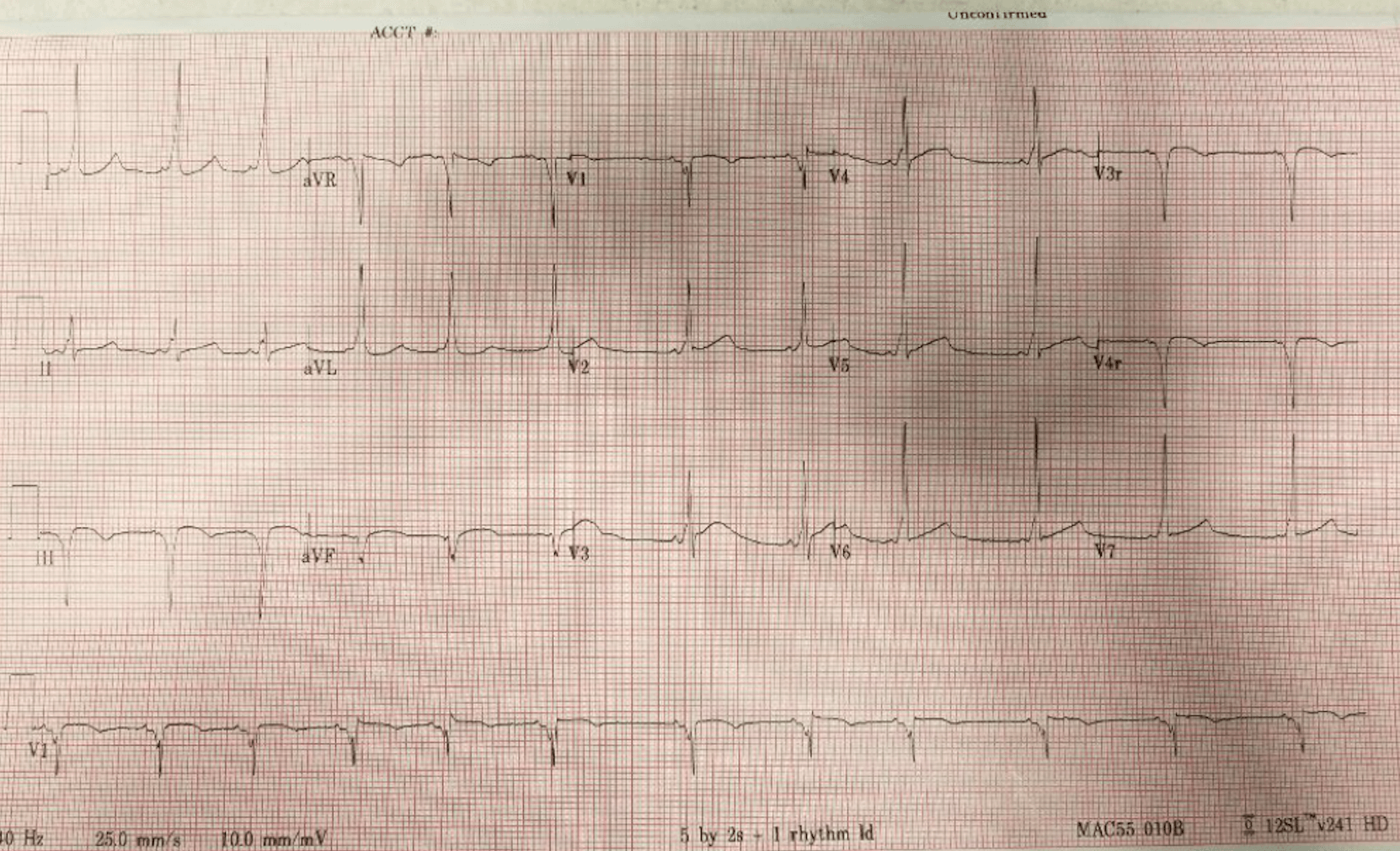EKG Contributor: Brett Linowes
Resident Author: Jennifer Rabjohns
Faculty Mentor: Massoud Kazzi
Date of Presentation: 2/25/19
Introduction:
A 9 year old girl presents with chest pain a week ago.
How would you describe this EKG?
Regular rate, rhythm, and left axis. PR is short (see lead II and V1, <120), QRS has normal interval but has upsloping.
What is the differential diagnosis?
The short PR makes you think of an accessory pathway, which usually means either Wolff-Parkinson-White (WPW) or Lown-Ganong-Levine (LGL) syndrome.
Background:
We talked a little bit about pre-excitation syndromes in the AVRNT and AVNT challenge. WPW and LGL are both associated with supraventricular tachycardias. In particular, WPW is associated with atrial fibrillation, atrial flutter, and then ultimately ventricular tachycardia or fibrillation. LGL is so rare and the accessory tract is so elusive that some people don't think it exist, but it seems to have similar risks (1).
Discriminating features of the two are below (2, 3).
Management:
Avoid sympathomimetics; they might enhance conduction through the AV node and lead to dysrhythmias (4). Some say if the patient is tachycardic with a narrow QRS that adenosine is ok, but the safest approach in known WPW or LGL would be to avoid AV-nodal blockers (3). AV-nodal blockers can lead to increased fast pathway conduction and ventricular fibrillation. If stable, use procainamide; otherwise, use synchronized cardioversion. Definitive treatment is ablation (5).
Take-home points:
- Consider pre-excitation syndromes in syncope, palpitations, and episodic chest pain.
- Lack of delta wave doesn't exclude a pre-excitation syndrome.
- Avoid sympathomimetics.
- Avoid AV-nodal blockers - use procainamide or synchronized cardioversion.
- Talk w/ cardiology - definitive treatment is ablation.
References:
- Cadogan, M. (2019, February). PR Interval. https://litfl.com/pr-interval-ecg-library/.
- Zhang, G. (2019, February). Lown–Ganong–Levine syndrome. https://litfl.com/lown-ganong-levine-syndrome/.
- Burns, E. (2019, February). Pre-excitation Syndromes. https://litfl.com/pre-excitation-syndromes-ecg-library/.
- Podrid, P. (2017, November). Lown-Ganong-Levine syndrome and enhanced atrioventricular nodal conduction. https://www.uptodate.com/contents/lown-ganong-levine-syndrome-and-enhanced-atrioventricular-nodal-conduction#H799228.
- Biase, L. (2018, September).Treatment of symptomatic arrhythmias associated with the Wolff-Parkinson-White syndrome. https://www.uptodate.com/contents/treatment-of-symptomatic-arrhythmias-associated-with-the-wolff-parkinson-white-syndrome#H11.


